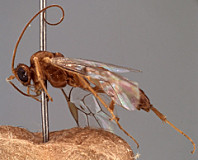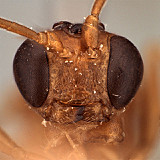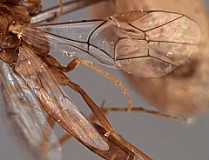described Lophyroplectus as a subgenus of Perilissus. Dalla (1901: 377) appears to be the first to have elevated Lophyroplectus to generic rank.
Lophyroplectus Thomson, 1883
Lophyroplectus nipponensis Cushman, 1937
Lophyroplectus oblongopunctatus (Hartig, 1838)
Lophyroplectus chinensis He and Chen, 1995.
luteator Thunberg, 1824 is a synonym of oblongopunctatus, but is unavailable because it was originally described in the genus Ichneumon and is a junior, primary homonym of Ichneumon luteator Fabricius, 1798.
The above description is based on a male and female specimen of the type species.
There are no specimens currently determined for this OTU, or those specimens determined for this OTU are not yet mappable.
This material is based upon work supported by the National Science Foundation under Grant Number DEB 0328922 with REU supplement DEB 1026618. Any opinions, findings, and conclusions or recommendations expressed in this material are those of the author(s) and do not necessarily reflect the views of the National Science Foundation.






